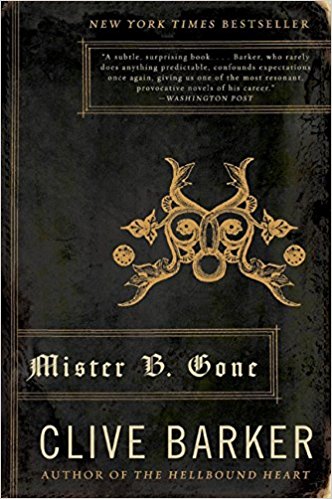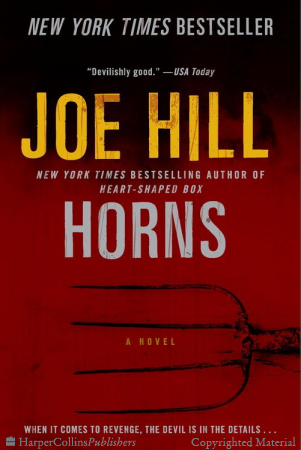
“Train Thoughts” the title enough could pique one’s interest. It causes readers to question what terminology of “train” the author is implying. Is he referring to a locomotive? Or is he indicating how one can train their thoughts? Due to the versatility within these pages, there is no wrong answer.
Upon seeing the cover, its image hints that a train will set the stage. But, as one reads, the text does reveal the idea of trained thought. Supporting this statement is the quote, “The mind is a very powerful thing. You’d be surprised at how much it can get you through.” Stressing significance, this quote appears as a constant reminder throughout the book. It suggests, if one wills their train of thought enough then reality and fantasy can blur.
“Train Thoughts” opens with bleak heavyheartedness. Written in first person, the narrator speaks about the murder of his wife, Vicky. Grief stricken, many negative revelations hit him in a short time. Among them, he realizes he will never receive closure on Vicky’s death. Furthermore, he realizes this tragedy has interrupted his everyday pattern of life. Specifically, this concerns the life he led with Vicky and the pattern of living they shared.
Trapped in a state of melancholy, he attempts trudging forward to resume a normal life. By routine, his morning begins with a two hour train commute to work. During this commute, he will sometimes read. Though he spends most of his ride eavesdropping and living vicariously through passengers.
Among them, he has developed an infatuation with a group of friends, Sheila, Neil, and Frank. Aside from the friends, he is smitten by a separate couple, Gina and Rob. Although he has never spoken to any of these people, he considers them his friends. Because of his observations, he is aware of their routines and habits.
When he arrives at work, most people in his office feel like he has returned too soon and hasn’t had the time to grieve. While at his profession, his pestering co-worker, Julie, visits. In short time, she presents an overbearing and obsessive personality, one that seems like she harbors a fatal attraction towards him. After brushing off her advances, he continues focusing on his duties and himself.
Once all characters are set, the nightmares begin. At first, the visions are nothing more than disturbing imagery. Yet, as the book advances, these nightmares become a window into the death of those he holds dear. In reality, a maniac is killing his friends in correlation to his dreams. Upon detecting a pattern, the narrator tries to stay one step ahead of the murderer.
Over time, the narrator becomes convinced he shares his commute with the maniac. With this revelation, he becomes more observant to other passengers. Doing so, the narrator discovers a mysterious man shares his ride. This enigmatic character, who the narrator calls, Shawn, is a calculating introvert. Like the narrator, Shawn also eavesdrops and observes other passengers.
Daily, as the narrator’s friends dwindle, his suspicions against Shawn grow. Based on dreams and instinct alone, it is now up to the narrator to investigate. From here, the plot becomes a high speed game of cat and mouse.
For observant readers, there are symbolic hidden messages that regard the killer’s identity. These clues appear in the narrator’s nightmares. By dream interpretation, the following symbols are relevant. This includes: rats, wasps, snakes, scorpions, and spiders. Also, in dreams, the killer’s weapons are a switchblade and a staff that appears as Vicky’s severed arm.
Character wise, the entire cast suffers from depression or disorders. For example, the narrator is unable to ever pull himself out of grief. Although he has the opportunity to better himself, he chooses to live in sadness. Eventually, he suffers from obsession and alcoholism. Aside from the narrator, Sheila has an eating disorder. Neil exaggerates the truth to seem interesting. Frank maintains a smile, although he always seems like he is on the verge of crying. Gina and Rob are an unmarried couple. Despite their contentment, one can sense they have commitment issues. Last, Julie’s character displays sexual repression.
Once becoming familiar with everyone’s disorders, I noticed something more important. If one combines each individual’s downfall, these troubles construct the narrator’s overall personality. Examples: Sheila’s food obsession is equivalent to the narrator’s alcoholism. Neil’s verbal exaggerations parallel the narrator’s emotional exaggerations. Frank’s fake happiness matches the narrator’s ability to mask his own depression. Gina and Rob’s commitment issues reflect the narrator’s unstable relationships. Julie’s promiscuity bares similarities to the narrator’s own sex life. Last, Shawn shares the narrator’s greatest qualities… being an introvert and a loner.
After connecting these characteristics, there is but one conclusion. The narrator sees fragments of depression in each passenger. Upon recognizing these disorders, he relates to each individual. This connection is what encourages the narrator to call these strangers his friends.
Above all, “Train Thoughts” presents two separate themes. One is the power of the mind. Mind power receives justification through the narrator doing what is necessary to survive. He presents the idea of distancing oneself from the horrors of the external world to remain sane. This method also speaks of denial. Not only the denial of one’s surroundings, but the denial of one’s actions.
A second theme stresses that humans are creatures of habit. Once something breaks routine, the subject becomes lost. This leaves the subject questioning how to pick up the pieces and continue life uninterrupted.
When I purchased “Train Thoughts,” I received more than what I bargained for. To sum up this book, I would have to call it the bastard child of William S. Burroughs’s “Naked Lunch” and L. Ron Hubbard’s “Fear.” If one has read those two books, you know exactly what you’re getting into. Not every day does a work of horror art like “Train Thoughts” pull into station. I highly recommend this trippy commute that pays homage to old school horror literature. “Train Thoughts” is for adults only.
Now, for the first time on this blog, I am adding something extra. Jay Sigler has agreed to provide me with an interview on “Train Thoughts.” Knowing that he is a busy man, I would like to thank him for granting me this opportunity. Without further ado, here’s a one way ticket into the brilliant mind that brought us, “Train Thoughts.”

AB: What inspired your work?
JS: I have loved reading from an early age, specifically horror and everything Stephen King. I later branched out to Chuck Palahniuk and Bret Easton Ellis, both who were huge influences on my writing.
The story of Train Thoughts came about during my two hour, each way, commute I took to work (much like the main character). I would sit in the same car every day, and see the same people every day. Everyone has their own story of how they got to where they are in life and it fascinates me to hear and learn about them. I couldn’t learn about everyone personally on the train, so I started imagining what their lives might be like based solely on my observation. It was a fun way to pass the time…. until a dark and twisted story developed.
AB: A major part of “Train Thoughts” is dream interpretation. Do you interpret your own dreams and why did you choose dream interpretation to allude to clues and the murderer?
JS: I have always been interested in dreams and what they mean. You can learn so much about yourself and what’s really happening inside your head, if you pay attention to them. It’s amazing to me how different people have certain feelings and emotions represented as the same thing in dreams; it’s pretty creepy when you think about it.
I wanted to use dreams in Train Thoughts as a way to “show not tell.” There is a lot of psychology happening as the main character deals with enormous loss and you can only say that in so many words. The dream sequences allowed me to describe these emotions in a way that touched upon the common themes we all experience in our dreams. I wanted the reader to actually feel them.
I also wanted a way to bring some messed up, insane horror to the story while it still being something believable that could happen in everyday life. Dreams allowed me to do that since there are no rules in a dream!
AB: At one point, I believed multiple characters were guilty and the killer could be anybody. How difficult was it to create a scenario that caused the reader to constantly doubt their suspicions?
JS: This was a bit difficult for me to achieve (if one would say I did). I had to constantly act as if I had never read the story before and be very critical of how each character’s arc played out. I needed there to be just enough to suggest the killer was a given character while also putting doubt in the reader’s mind; I struggled at times to find that balance.
AB: Being a family man, do you allow your kids to read your work? If so, what are their thoughts? If not, at what age would it be suitable for them to read “Train Thoughts?”
JS: I have two children, neither of which will read Train Thoughts until they are at least sophomores in high school! They know daddy’s book is scary and inappropriate for kids. I’ll sometimes take pictures with them holding the book, acting like they are scared but that’s all just for fun. I’m less worried about my daughter (5) looking inside since she can’t read (yet…), but when I see my son (9) start to take a peek, I make sure to take it away. He’s getting a little too smart for his own good but I am glad he wants to read it.
I am proud that both of them say they also want to write books. I think the overall journey of publishing Train Thoughts has had a very positive impact in getting them more interested in reading and writing. They see that I have written a book and it gives them confidence that they can too. My son and I have even started writing a few stories together!
AB: What do you have planned for future works? Will all titles remain
in the horror genre?
JS: I am currently working on what will likely end up being a novella. There’s a very loose tie in to Train Thoughts, which doesn’t require you to read it, but it’s there for those who are interested; more like an Easter egg.
I also have ideas for 2-3 novels and a bunch of short stories I might, or might not, eventually publish as a collection. I just need to find the time to get them all out of my head (read as: I’m lazy). They will all remain in the horror/thriller realm. It’s my favorite genre to read, watch, and live so I would like to contribute back to it the best I can.
(The exception to this, of course, is if my son and I were to ever publish – those aren’t horror related. Well…… maybe….)
AB: How can readers connect with you?
JS: The best way to connect with me as an author is through my author group on Facebook, Author Jay Sigler: https://www.facebook.com/groups/289418258269216/
I also have a Facebook page for everything Train Thoughts the book:
https://www.facebook.com/TrainThoughtsBook/
I am active on Instagram (https://www.instagram.com/trainthoughtsbook/) and am getting better about Twitter (https://twitter.com/train_thoughts).
Recently I’ve joined Litsy and here are also a bunch of other random links:
https://www.trainthoughtsbook.com/




